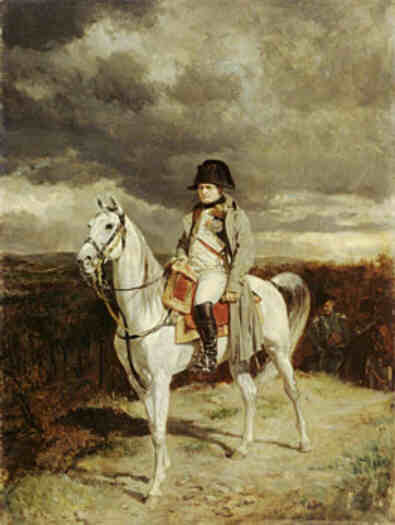^
Died on 31 January 1635: Willem
Corneliszoon Duyster, Dutch painter of genre scenes and
portraits born in 1599. — [Why a Y in his name? you ask. Simple: without
it, he'd be a Duster, buster, without any luster, and that wouldn't pass
muster.]
— Duyster was active mainly in his native Amsterdam. Most of his paintings
depict soldiers, sometimes in action, but more usually drinking, gaming,
or wooing. His delicate skill at painting textiles, his ability to characterize
individuals, and his power to express subtle psychological relationships
between them, suggest that if he had not been carried off by the plague
in his mid 30s he might well have rivalled Terborch.
— LINKS
— Soldiers
beside a Fireplace (1632) _ During the second quarter of the 17th century
a group of artists began to specialize in painting the life of soldiers.
Scenes of plunder and battle were depicted but the ancient battle of sexes,
where the field of action was a room in an inn or a barrack, and in which
the outcome of the struggle is not much in doubt, was more frequently represented.
Other popular subjects were soldiers drinking, smoking and gambling at cards
or tric-trac, activities that contemporary predicants and moralists condemned
as vices that endanger salvation. But it is doubtful if the painters of
these scenes and their clients viewed them as pictorial reminders of the
perils of sin and the inexorable need to lead a virtuous life. Pictures
of the life of off-duty soldiers were called by the Dutch 'cortegaardjes'
a corruption of the French term 'corps de garde'. The better ones show little
movement or overt action. Painters of them had a special feeling for tonal
values and their pictures take on a certain still-life quality. In their
half-dark interiors the light glitters over uniforms, and a fine subdued
play of colours, mostly broken and harmonized by delicate half-tones, betrays
the Dutch gift for intimate pictorial qualities and a subtle rendering of
textures. Some even anticipate the achievement of the high society painters
of the following generation, when well-to-do burghers rather than soldiers
and their friends became the favoured subject of genre painters. Specialists
in this category worked in Amsterdam, Utrecht, Delft, but seldom in Haarlem.
The leading ones in Amsterdam were Willem Duyster and Pieter Codde. What
sets Duyster's rare pictures apart from those made by his contemporaries
is his distinct chiaroscuro and the refinement of his colors. He was also
better able than any of them to convey the fascinating visual drama which
can take place when people do little more than confront each other. It is
difficult to think of a painter of his time who surpasses his penetrating
characterization of the personalities of the men gathered round a fireplace
in the modest nocturnal scene in the Soldiers beside a Fireplace.
There are other versions of the same. Duyster's approach is always original.
His cortegaardjes and small pictures of dignified full-length single figures
seen against dark backgrounds served as one of the points of departure for
Terborch's great accomplishment in these branch of painting.
— The
Marauders |
 Died
on 31 January 1891: Jean Louis Ernest Meissonier,
French artist born on 21 February 1815. — 1830s Earning a livelihood
as a book illustrator with Tony Johannot 1834 Salon debut 1838 Marries Jenny
Steinheil 1859 Commissioned to paint the Battle of Solferino 1861
Elected to the Académie des Beaux-Arts 1870s Serves as president of the
Institut de France 1870s Serves as president of the Société Nationale des
Beaux-Arts 1888 Jenny dies in June 1889 Is the first artist to receive the
Grand Cross of the Légion d'Honneur 1890 Marries Mlle Bezançon
Died
on 31 January 1891: Jean Louis Ernest Meissonier,
French artist born on 21 February 1815. — 1830s Earning a livelihood
as a book illustrator with Tony Johannot 1834 Salon debut 1838 Marries Jenny
Steinheil 1859 Commissioned to paint the Battle of Solferino 1861
Elected to the Académie des Beaux-Arts 1870s Serves as president of the
Institut de France 1870s Serves as president of the Société Nationale des
Beaux-Arts 1888 Jenny dies in June 1889 Is the first artist to receive the
Grand Cross of the Légion d'Honneur 1890 Marries Mlle Bezançon